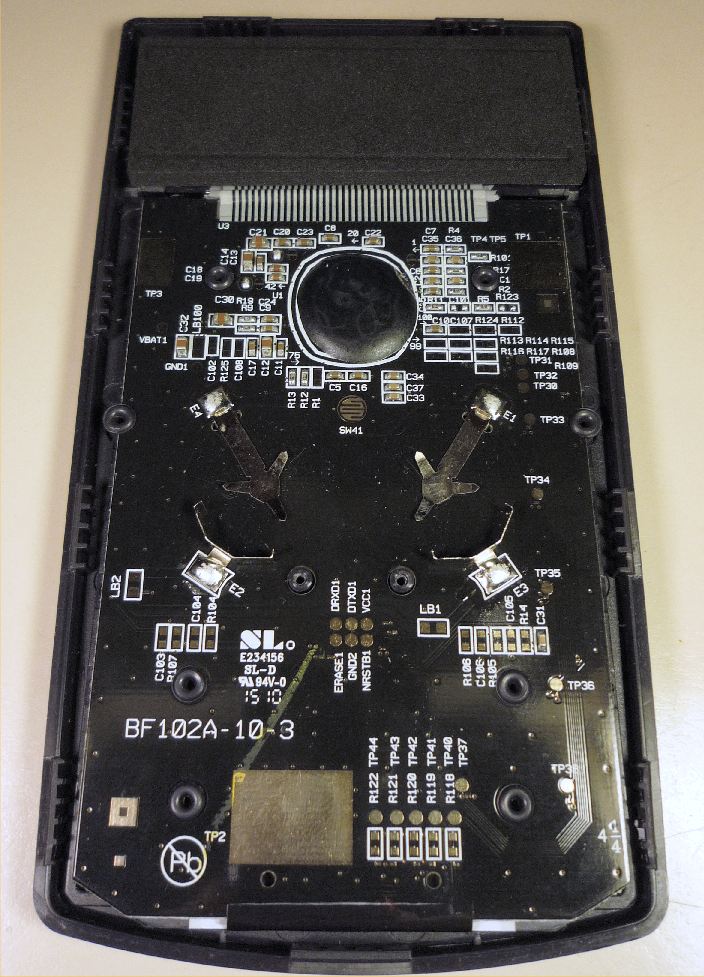| Re: HP 10BII+ Battery removal warning Message #5 Posted by Katie Wasserman on 23 Apr 2011, 11:39 a.m., in response to message #4 by Martin Pinckney There's no capacitor in there to retain memory. None of the HP ARM-based calculators have a capacitor for memory retention. You've got at best a few seconds before you'll lose memory if you remove both coin cells in any of these machines. Here's a pic of 10bii+ pcb: -Katie
|
